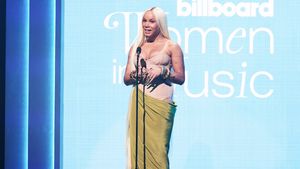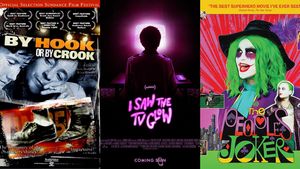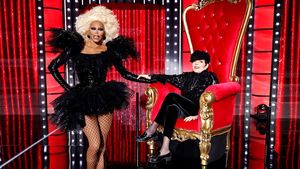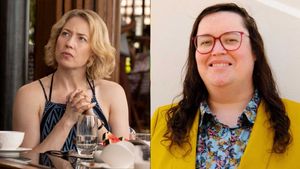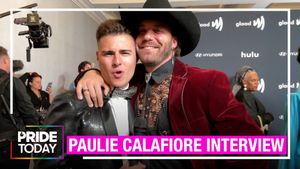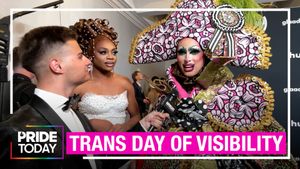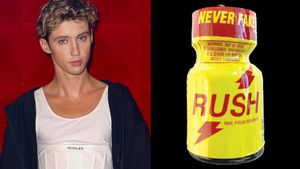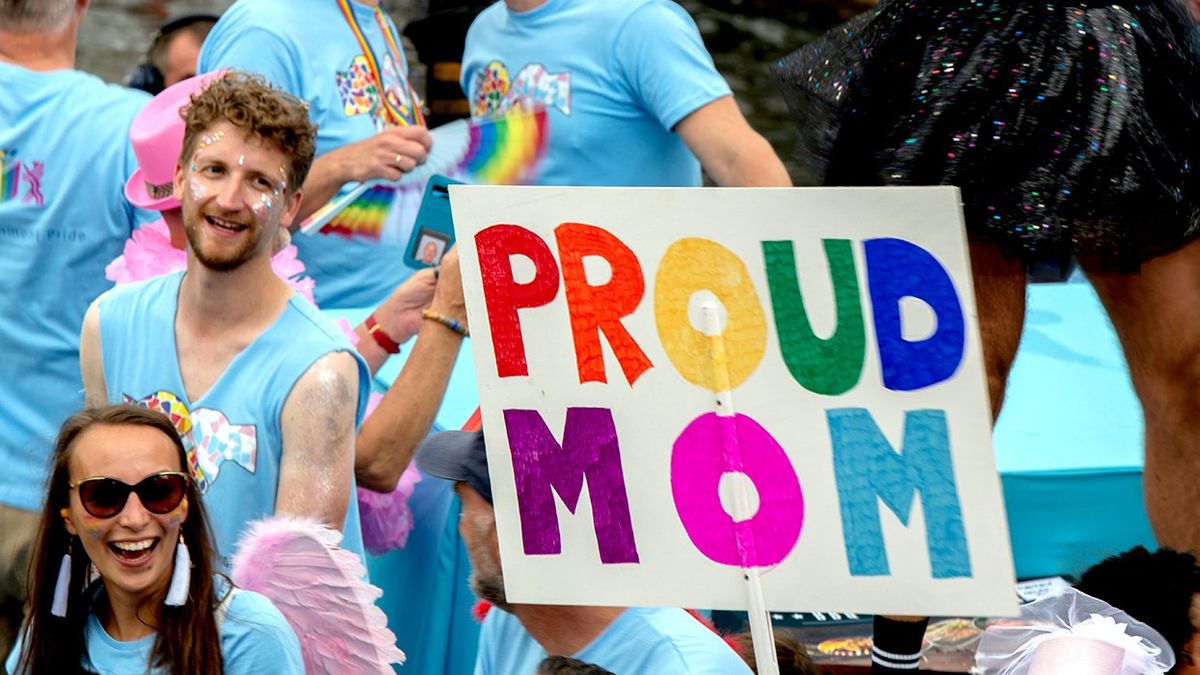OK. Here's
the thing. I've just made my third feature film,
Fugitive Pieces, and it's a story about a
young, Jewish Polish boy whose family is killed in
World War II. He is found and saved by a Greek man,
who at the risk of great personal danger, hides the
boy in occupied Greece throughout the war. He then
effectively adopts the child (with whom he has no
shared language, culture, or history). The film goes
on to dramatize the life of this boy as he grows up, becomes
a famous writer, gets married, and grapples with the
legacy of his traumatic past.
The film is based
on the profoundly moving literary bestseller by Anne
Michaels, which has won numerous awards internationally. All
very well and good.
But why am I
writing about this film for The Advocate? Fair
question.
I have previously
made two feature films that directly addressed issues
of intimacy and sexuality, gay, straight, and not so
well-defined. Those features, Eclipse
(distributed by Strand Releasing) and The Five
Senses (distributed by Fine Line and starring Mary
Louise Parker), and a number of short films including
Touch (part of the DVD compilation Boys
Briefs) are of obvious interest to gay and lesbian
viewers. I have also directed episodes of the TV
series Queer as Folk, The L Word, Six Feet
Under, Nip/ Tuck,Rome, Dexter and The Tudors... all
of which might be of more obvious interest to readers
of this publication. But what about Fugitive Pieces?
All right. Well,
there are a few ways to answer this question. The first
has to do with the culture's evolving notions
surrounding identity politics. When I was growing up
(a few years ago), there was an expectation that gay
and lesbian artists would consistently deal directly
with GLBT issues in their work. The understanding was that
there was a lot of political and social work to be
done in the world and the onus for artists was on
producing work that might effect change -- or at the very
least affirm the needs and desires of a community that
needed to be accepted, understood, and valued. For the
consumers of gay and lesbian artistic practice,
positive affirmation was prized above all -- often
above artistic merit. I understood that imperative, even
though as an artist I bridled against its confines. It
was a natural response to decades of invisibility and
even downright hostility.
But there has
been a sea change in expectation and in identity politics.
It is understood now that gay writers, filmmakers,
musicians, and visual artists are not solely (or even
largely) defined by their sexuality. They are defined
by their gender, their age, their nationality, their
cultural background, their ethnicity, their religion,
their economic bracket, their education, and their
political persuasion. And at any given time, an artist
might choose to address all or none of these realities in
their work. Inspiration is complicated, and the
diversity of our experience is something that is now
being acknowledged and accepted more than ever.
It's clear that there is a lot that gay and lesbian
artists have to contribute to the public realm on an
unlimited array of issues, many of which have little
to do with sexuality.
But that is not
to say that sexuality has become increasingly irrelevant
to gay and lesbian artistic discourse. It is just that it
has been repositioned and reframed. It could be argued
that sexuality informs to some degree everything that
gay and lesbian artists produce, whether or not it
explicitly deals with that subject matter. The stated
subject of any work is only its surface, it might be
said. Who we are will subtly or overtly affect our
approach to any subject, and we are increasingly
becoming sensitive to and appreciative of those nuances. For
example, anyone who has been marginalized as a result
of their sexuality will speak of social issues, or
about public policy or about race, or about any other
number of issues from that position of marginalization.
Sexuality, whether referred to explicitly or not, is clearly
not irrelevant.
Fugitive Pieces, while not dealing at all
explicitly with sexuality, does deal with issues of
intimacy, with the repercussions of political
persecution, and with the importance of compassion,
charity, and self-sacrifice. What gay or lesbian viewer
cannot find a point of connection with any of these themes?
In the early
'90s, the New Queer Cinema movement was the first step in
exploding queer audience expectations. By presenting
complex, confrontational, and often problematic gay
and lesbian representations in movies like Poison,Swoon, and The Living End, new
filmmakers urged audiences to look beyond their desire for
positive affirmation and to find inspiration in a range of
more diverse, challenging, and true-to-life
representations.
Now, 15 years on,
there is an understanding that while positive
affirmation has its place, so does a recognition that values
are expansive and not strictly defined by sexuality. A
gay Democrat just might have more in common with a
straight Democrat than a gay Republican. And a gay
viewer might occasionally be more interested in seeing his
political ideals and personal values reflected than his
sexuality.
It's an
interesting development and I think it speaks well of our
plurality and our complexity as a community.
So. Why
Fugitive Pieces in The Advocate? Why not?












